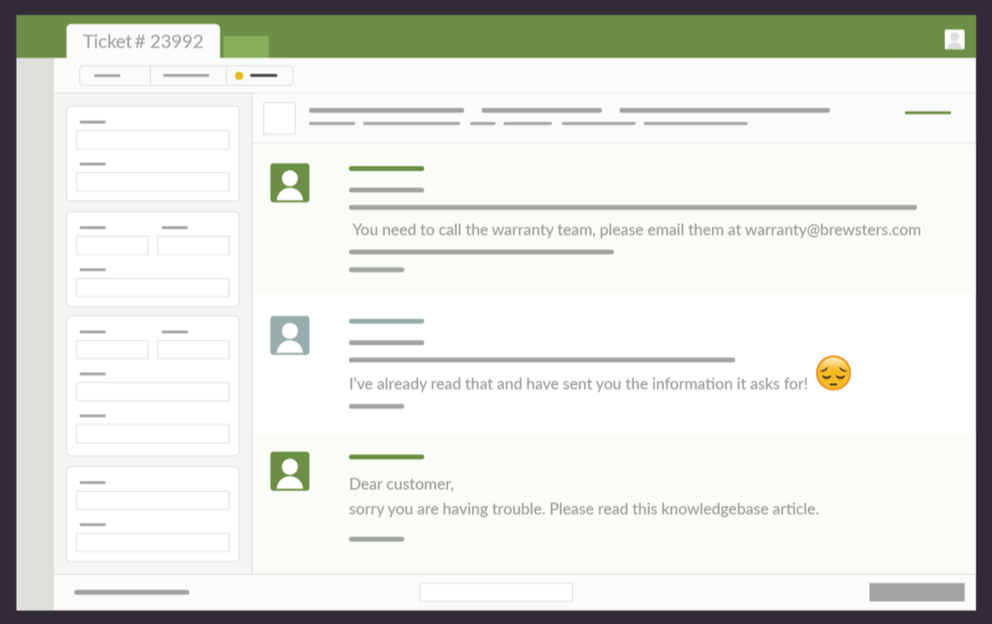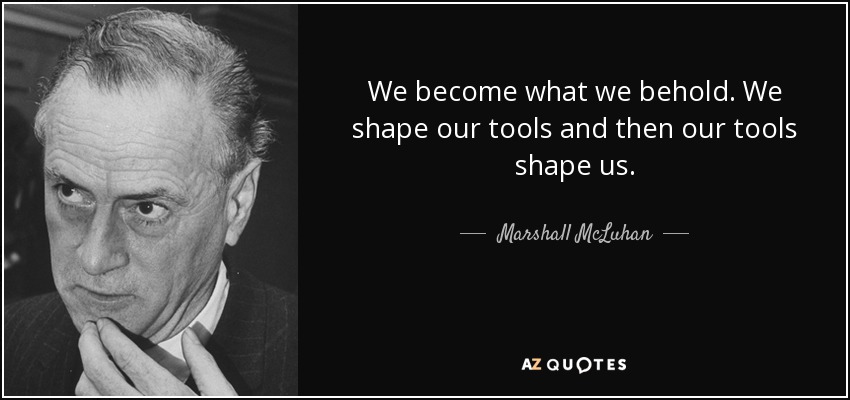One week ago, we launched the new Kayako. And what a week it was – from overwhelming site traffic on Day 1 to being featured on Product Hunt on Day 2, it’s been a rollercoaster for our entire team. Needless to say, we are really grateful for the positive response, and thrilled to see how many customers both new and existing identify with Kayako’s mission.
Businesses are realizing that in order to keep up with the growing number of customers and channels, traditional help desk software simply cannot make the cut—that this ever-changing market demands that they evolve in lockstep with their customers.
Failure to do so means holding your customer service team back from delivering modern, personal and relationship-building customer service. But, how do you do it? How do you transform an entire team, department and even business into a proactive, personalized customer service machine?
“Please submit a ticket. Can you repeat that? Please hold. Have you looked at this article? We can’t help, you’ll need to contact another team. Please wait while I connect you to a different agent.”
Accept that traditional help desks just aren’t helpful anymore
The “support ticket” is a 1990s term for the IT services industry, which is reason enough to demonstrate that the idea of a support ticket is simply irrelevant to your customers in 2016.
Your customers don’t value creating tickets, so why would you design the customer experience around them? Your customers don’t see themselves as email ticket customers or Twitter ticket customers, so why would you?
Tickets silo people and channels, preventing easy, friction-free service for both your team and customer. We are individuals first. By moving away from support ticket thinking, your team can finally understand the bigger picture, tailor service to the individual, and see how the customer experience plays out across all your business’ touch points, not channel-specific tickets.
Traditional help desks hold you back from excellent customer service

Let’s look at classic example of a traditional help desk experience. A customer contacts your business. Their issue immediately translates into a ticket template that organizes all the input information. The customer becomes a faceless ticket number—a ticket that narrowly focuses on a small part of the problem. That’s where the breakdown begins.
From here, the customer is processed through a web of departments and agents who all try to resolve the ticket as soon as possible. But again, in the traditional help desk, people and channels exist independent from one another and siloed away from each other. The dots between them rarely connect and the full story is never told.
At no point is your team empowered with the full context of the customer. Instead, their help desk forces them to look only at the problem that’s typed up into this ticket. There’s no context about who the customer is. What they’re trying to do. What they were doing before they tried to start the conversation and what they were doing during. No one has the ability to make the most of that interaction and deliver a standout experience which builds the relationship.
In this scenario, it’s common for customers to feel frustrated or misunderstood as they talk to you. It’s even more common for the customer to repeat themselves over and over, repeating their story to new people after being re-routed or made to switch channels.
In this case, the agent suggests a knowledge base article that the customer has not only already read, but also taken action and currently awaits next steps. The flow of this experience is entirely too common and may be dangerously close to the experience you’re giving your customers right now.
Marshall McLuhan, a Canadian philosopher once said:

Maybe we’ve been so accustomed to this way of being treated as customers that we treat our own customers this way. Isn’t it time to stop trying to fit the round peg – your customers – into the square hole of a help desk, and to think again about how to use technology to better support and serve our customers?
Treat your customers like your friends, not bureaucratic paperwork
Nobody likes to be told “no” by a faceless policy and no one wants to think of themselves as being “processed”. No one appreciates being passed around to multiple agents, with the repetition that naturally incurs.
A great customer experience can only be delivered by a team that is deeply empowered to become the customer’s advocate—a team who can control and guide a customer’s experience. A customer advocate will bring answers to the customer based on their context, versus sending them through winding escalation paths to wait, explain, transfer, repeat.
Customer advocacy is a mindset, and one that business leaders are responsible for adopting in order to bring their customer service into the modern age. In order to take control of the customer experience, you have to give control to your team. This means enabling your team to leverage their unique set of knowledge and critical thinking skills to actually help the customer, rather than push them through constrained process. Let your customers deal with people, not policies.
Run—don’t walk—towards the future of modern customer service
If these changes sound lofty or unattainable, we assure you, they are not. If these changes sound at all optional, again, they are not. There is no better time to transform your customer service team from an antiquated cost center into a unified, effortless competitive advantage.
After all, 67% of customers today prefer this modern approach built on self-service and frictionless conversation. Excellent customer service is no longer an added bonus; it is a critical business necessity. The new Kayako was built on this very premise—that if you can unify your customer conversations, understand their unique context, and set your team up to collaborate in an entirely new way, you will transform your support team into a lean, mean, customer advocacy machine. Same amazing team, new proactive approach.
Let’s resolve tickets once and for all and focus on what really matters: conversations, interactions, and your relationship with your customers.
Move past the disadvantages of help desk software: Take it for a test run
Ready to get started? Give Kayako a try yourself. Go to kayako.com, create your free trial, and begin exploring the new Kayako. You can get to grips with Kayako in under 10 minutes—it’s insanely simple to get started. You can invite your team to join you, set up your channels, and personalize your Help Center to match your brand.
Visit our website to learn more about the new Kayako, and while you’re there, register and join us for our newly revamped weekly demos.
